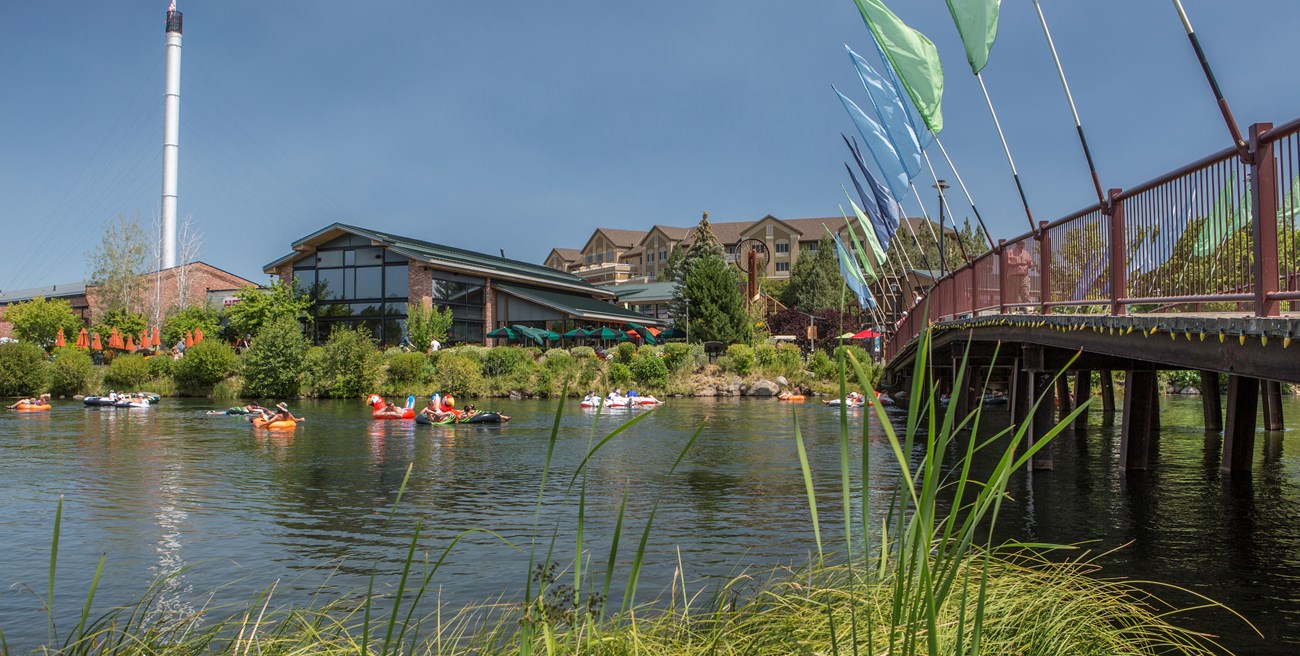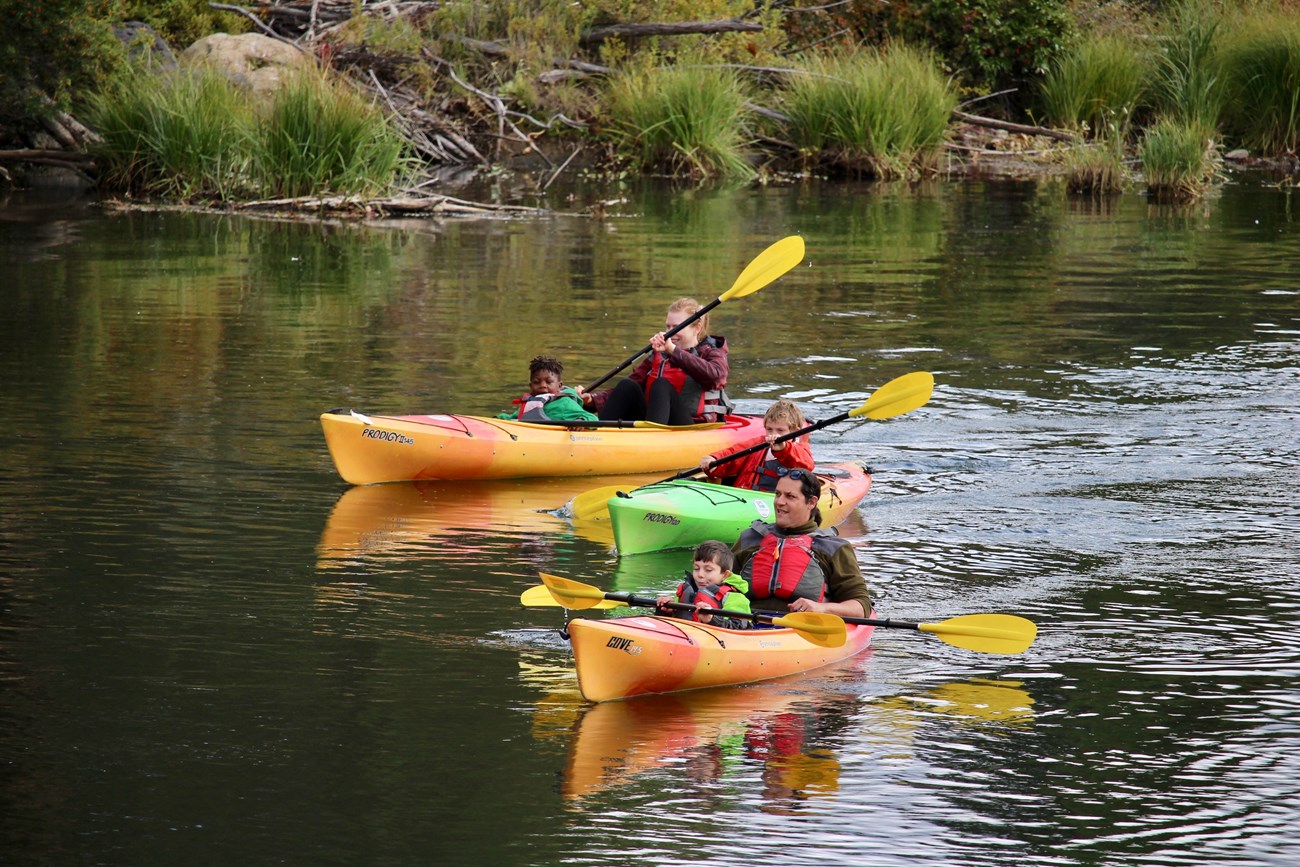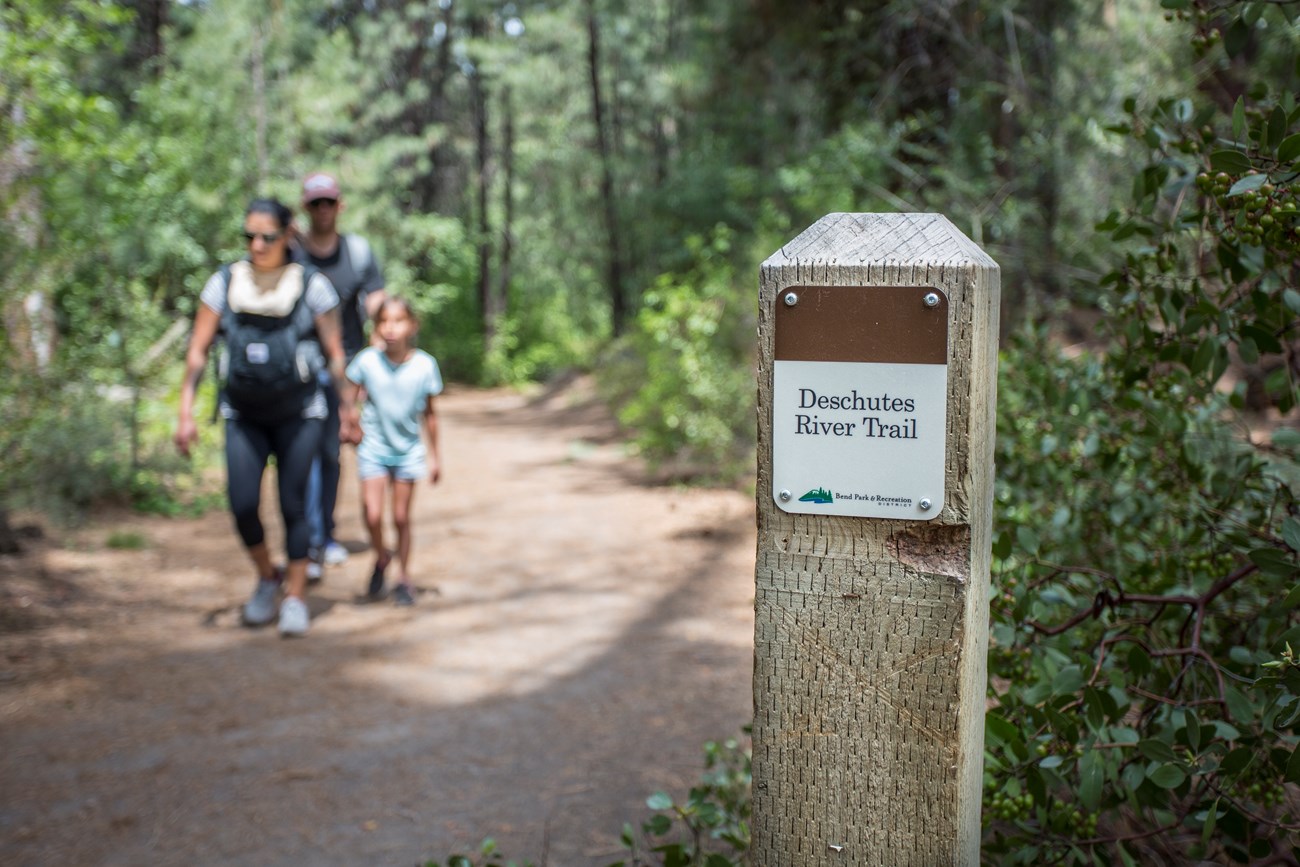Last updated: June 1, 2022
Article
Community Engagement Results in Recreation and Natural Resource Improvements for the Deschutes River Corridor

By Alisson Vera
As one of the fastest growing cities in Oregon, Bend saw more than 267,000 people floating down the Deschutes River during the 2021 river recreation season – up 30% from 2020.
Carving its way through canyons and beautiful desert landscapes, the Deschutes River is a 250-mile river that provides diverse recreation opportunities for residents and visitors in Central Oregon. After noticing an all-time high number in visitation, the Bend Park and Recreation District conducted an inventory of the riverbank’s habitat and found that nearly 100 user-created access points had been made – highlighting the need for visitor use management and natural resource protection measures.
The district owns and manages 25 river access points and 16 parks within the river corridor which offer various recreational opportunities such as paddlecraft, fishing, swimming, wheelchair access to the river, and more. However, the existing access points and facilities have not been enough to accommodate the growing number of visitors, resulting in trampled vegetation and erosion along the riverbank.
In an effort to protect the river and its surrounding riparian habitats, park managers installed fencing and signage in the areas most impacted by visitor use. Nevertheless, the impacts to the river continued to grow and community members began to voice their concerns.
With community support, the district collaborated with the National Park Service – Rivers, Trails and Conservation Assistance program in developing the Deschutes River Access and Habitat Restoration Plan which identifies restoration strategies and appropriate river access points to help balance habitat restoration and river recreation.

“The Bend Park and Recreation District was committed to an inclusive planning process that focused heavily on public outreach and hearing from a wide range of stakeholders,” said Dan Miller, a National Park Service community planner who assisted in developing the plan.
While the initial inventory identified areas requiring restoration and habitat protection, it also highlighted the community’s growing need for river access and outdoor recreation opportunities. With this need in mind, the Bend Park and Recreation District created a River Planning Focus Group consisting of members from the city, local natural resource agencies, and environmental and accessibility organizations, to help guide the development of the plan.
With guidance and support from Miller, the group distributed two online surveys to learn more about how the public was interacting with the river and what improvements they hoped to see. Focused on equity, diversity, and inclusion, the district asked the National Park Service for assistance in translating the survey to Spanish. Approximately, 1,700 community members shared their responses in both English and Spanish.
With public input being a critical component to the plan development, the group quickly adapted to virtual outreach and engagement when the COVID-19 pandemic began in early 2020.
“We started using google maps to do virtual site tours and we got very good with virtual meetings,” said Rachel Colton, a park planner for the Bend Park and Recreation District. “Even with COVID-19, we were able to engage the local community and received significant feedback.”
Throughout the two-year planning process, the National Park Service supported the Bend Park and Recreation District in facilitating in-person and virtual focus group and stakeholder meetings, providing GIS and graphic design resources, and identifying project sites that would best provide river access while conserving the natural habitat.
“We didn’t have a lot of people working on this plan, so having Dan [Miller] bring in [National Park Service] folks to do GIS or graphics for our products was awesome,” said Sarah Bodo, a Bend Park and Recreation District park planner who worked on the plan.

The plan received community input each step of the way before the project list was finalized. In addition to the two surveys, the district hosted 16 community events, maintained ongoing correspondence, provided project updates, and participated in media stories to keep the public engaged. Community members provided essential feedback on what types of access points were desired and which locations they felt were a priority.
“The Deschutes River is such a treasure for the City of Bend, so how we collectively decide to manage river access is essential to protecting the river, provide recreation use and enhance living for each of us,” said Randy Welsh, a Bend resident and focus group member.
Adopted in November 2021, the plan features an ambitious list of 28 projects that can be implemented over the next 10 years. The projects range from closing fence gaps and improving existing facilities, to creating additional access points with consistent signage and education outreach programs. Additionally, the plan identifies accessibility improvements for river access, parks and trails as well as projects that would protect, create or enhance the habitat.
“The Bend Park and Recreation District’s Deschutes River Access and Habitat Restoration Plan serves as an exemplary model of how a community or agency can effectively plan for increasing recreation demands while protecting the natural resources that make the river so special,” said Miller.

Today, the Bend Park and Recreation District is well underway in implementing and completing projects listed in the plan. Current projects include planting trees, consolidating access points and improving trail systems. By completing projects detailed in the plan, the district hopes to reverse the trend of damaged vegetation and erosion and create equitable access to the river to provide recreational opportunities for all.
The Deschutes River Access and Habitat Restoration Plan is the culmination of two-years of community driven hard work and collaboration. It highlights the need and want by communities to balance outdoor recreation opportunities with restoration to ensure future generations will be able to enjoy the river.
“I loved having the opportunity to work on this plan with the Bend community, the district’s board and staff, and the National Park Service,” Colton said. “The collaboration, energy and dedication were evident in all who participated, and we were certainly fortunate to have such an amazing team. I’m excited to see the hopes and dreams reflected in this plan come to life.”
